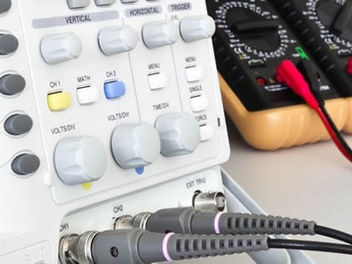Which Class of Electrical Appliance Requires the Most Testing?
- Guy hudson
- Jul 11
- 6 min read
In the UK, safety is a top priority when it comes to using and managing electrical appliances. Every plug-in device, from your toaster to your office photocopier, poses some level of risk. That’s why it’s essential to understand how these appliances are classified – and more importantly, which ones require the most testing to stay compliant with health and safety laws.
In this blog, we’ll explore the different appliance protection classes (Class I, II, III), what each means in practical terms, and why Class I appliances stand out as the ones requiring the most rigorous and frequent testing. Whether you’re a business owner, facilities manager, compliance officer, or electrician, this guide will help you stay compliant, safe, and informed.
What Are the Classes of Electrical Appliances?
Electrical appliances are divided into several classes based on how they are protected against electric shock. These classes are defined under international standards (such as IEC 61140) and are widely recognised across the UK and EU regulatory landscape.
Class I – Earth Protected
Class I appliances use basic insulation and rely on a protective earth connection to prevent electric shock. If a fault occurs and a live wire touches the casing, the earth wire ensures the electricity safely flows to the ground. Typical examples include:
Metal kettles
Washing machines
Electric cookers
Extension leads
Power tools
Due to their reliance on the earth wire for safety, these devices are considered higher risk and require thorough and regular testing.
Class II – Double Insulated
Class II appliances are designed with double or reinforced insulation and do not rely on a protective earth connection. Their design makes them safer by default, even if a fault occurs. Common examples:
Hairdryers
Phone chargers
Laptops and tablets
Power supply adapters
These appliances are still tested but are considered lower risk.
Class III – Low Voltage (SELV)
Class III appliances operate at extra-low voltage (typically below 50V AC or 120V DC). They often use a transformer or battery as their power source, meaning they pose minimal risk of shock. Examples include:
Battery-operated toys
LED garden lights
Torches
USB-powered devices
While these appliances require some testing, they demand far less scrutiny than Class I or II.
The Importance of Testing in the UK
In the UK, testing is not just good practice—it’s part of the legal framework for maintaining workplace safety. The Electricity at Work Regulations 1989 requires that all electrical systems, including appliances, must be maintained to prevent danger. While the law doesn’t specify exact testing intervals, it does require a risk-based maintenance approach.
PAT Testing and Legal Compliance
Portable Appliance Testing (PAT) is the most common method used in the UK to check that electrical appliances remain safe to use. The type and frequency of PAT testing depends heavily on the appliance’s class, environment, and usage.
Class I appliances undergo more complex tests, including earth continuity.
Class II appliances need insulation resistance checks.
Class III appliances often require just visual inspection.
Why Class I Appliances Require the Most Testing
1. Greater Risk of Electric Shock
Because Class I appliances have exposed conductive parts (e.g. metal casings), they depend on a functioning earth wire to prevent shock. If this wire is damaged, the risk of injury is significantly higher. Regular testing helps identify these faults before harm can occur.
2. More Complex Testing Procedure
Testing a Class I appliance involves several steps:
Visual inspection to check for damage to cables, plugs, and casing.
Earth continuity test to verify that the earth connection is effective.
Insulation resistance test to ensure the internal insulation is working.
Polarity check to confirm wiring in the plug is correct.
Functionality test to verify safe operation.
By contrast, Class II and III devices do not require the earth continuity test, and Class III often skips insulation resistance entirely.
3. Higher Usage and Movement
Class I appliances are frequently used in high-risk environments like construction sites, commercial kitchens, and workshops. These settings make wear and tear more likely, increasing the importance of testing.
Appliances that are portable, frequently moved, or shared among employees are more likely to be damaged – and therefore must be tested more often.
4. Manufacturer Obligations
Manufacturers of Class I appliances must conduct type testing to comply with the Low Voltage Directive (LVD) 2014/35/EU and UKCA standards. This includes:
Dielectric strength testing
Earth fault simulation
Leakage current measurement
EMC testing
These requirements add further layers of scrutiny and ongoing testing.
How Often Should Class I Appliances Be Tested?
There is no universal answer, but guidance from the Health and Safety Executive (HSE) and IET Code of Practice for In-Service Inspection and Testing of Electrical Equipment recommends a risk-based schedule.
Suggested Intervals:
Appliance Type | Environment | Suggested PAT Frequency |
Class I Portable Tool | Construction Site | Every 3 months |
Class I IT Equipment | Office Environment | Every 1–2 years |
Class I Catering Appliance | Commercial Kitchen | Every 6 months |
Class I Extension Lead | Any Workplace | Every 12 months |
The testing schedule should be recorded and updated based on real usage and condition.
What’s Involved in Class I PAT Testing?
Let’s break down the components of a typical PAT test for a Class I appliance:
1. Visual Inspection
Check for damaged cables
Inspect the plug and fuse
Examine casing for cracks, signs of overheating
2. Earth Continuity Test
Verifies a low-resistance path between metal casing and earth pin
Limits are usually <0.1 ohm
3. Insulation Resistance Test
Measures resistance between live/neutral conductors and earth
Should exceed 1 MΩ (megaohm) for safe operation
4. Functional Checks
The appliance is turned on to confirm it operates safely and as intended
These results must be documented, especially in regulated environments like healthcare or education.
What About Class II and III?
Class II Testing Overview
Class II appliances eliminate the earth wire and rely on their robust internal insulation. While safer by design, they can still suffer from insulation failure or physical damage.
Testing includes:
Visual inspection
Insulation resistance testing
Functional testing (if applicable)
Testing intervals for Class II devices are generally longer – often every 24 months or more.
Class III Testing Overview
Since these are powered by SELV systems, the risk of electric shock is minimal. Testing is usually limited to:
Checking for damage
Confirming that power adapters are operating within specification
Ensuring cables and connectors are safe
Testing may be carried out during routine maintenance rather than separate PAT sessions.
What Happens If an Appliance Fails a Test?
If an appliance fails PAT testing, it must be:
Removed from service immediately
Tagged as unsafe
Either repaired or replaced
Re-tested before use
It is a legal duty for businesses and landlords to ensure no employee or tenant is at risk due to faulty electrical equipment.
UKCA vs CE Marking: Testing Before Market Launch
Any Class I product sold in the UK must meet UKCA (or CE in Northern Ireland) requirements. The testing process before market placement includes:
Safety testing to BS EN/IEC 60335, BS EN/IEC 61010
EMC testing
Earth fault simulation
Thermal tests under load
Manufacturers must retain a technical file with test results, risk assessments, and conformity declarations for at least 10 years.
Common Class I Appliances That Require Frequent Testing
Appliance | Industry | Testing Notes |
Drills | Construction | Heavy use, frequent damage |
Toasters | Hospitality | Metal body, risk of earth faults |
Extension leads | All industries | Trip hazard, often misused or overloaded |
Floor cleaners | Cleaning services | Portable, high use |
Electric hobs | Catering | Constant exposure to heat and grease |
Desktop PCs with metal case | Office | Require PAT if not hardwired |
Training and Competency Requirements
PAT testing should be carried out by someone competent. This doesn’t always mean a qualified electrician, but they must:
Understand appliance classes
Know how to operate PAT equipment
Interpret test results properly
Training courses are widely available, such as:
City & Guilds 2377 Certificate
CPD-accredited online PAT training
Manufacturer-led PAT tester training
Summary: Class I Appliances Demand the Most Testing – Here's Why
Let’s summarise why Class I electrical appliances require the most testing:
They pose the highest risk due to metal casings and earth dependency
Multiple testing stages are involved: earth continuity, insulation, polarity, and functional checks
Frequent usage in workplaces means faster wear and tear
Legally mandated type approval and UKCA testing before sale
Require regular PAT testing, especially if portable
Final Thoughts
Understanding the differences between appliance classes is more than technical knowledge—it’s a matter of safety and legal compliance. At Global Compliance UK, we support businesses in meeting all PAT and regulatory testing requirements.
By giving Class I appliances the attention they deserve, you reduce risk, stay compliant with legislation, and create safer environments for everyone.
Need Help with PAT Testing or Compliance?
At Global Compliance, we offer professional PAT testing, equipment inspections, and compliance consultancy tailored to your industry.
Call us on 0330 100 5341 or email info@global-compliance.co.uk to schedule your next test or request a compliance audit.



























Comments